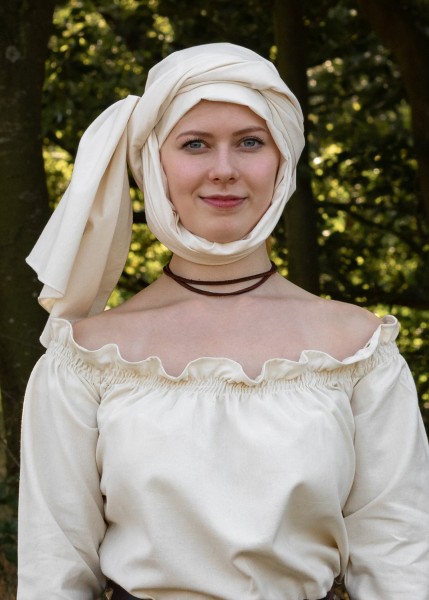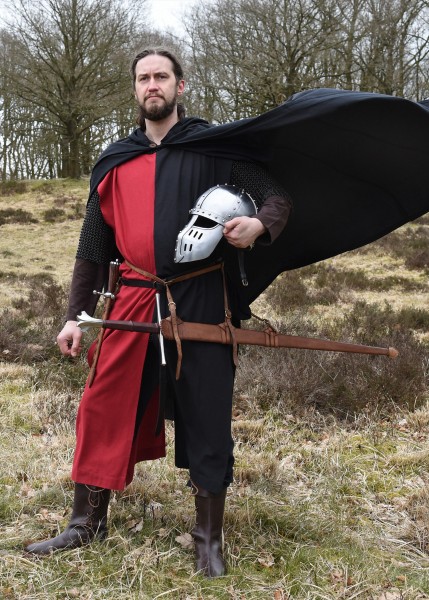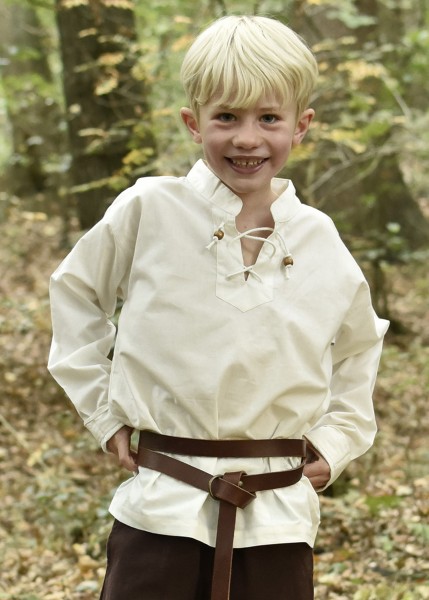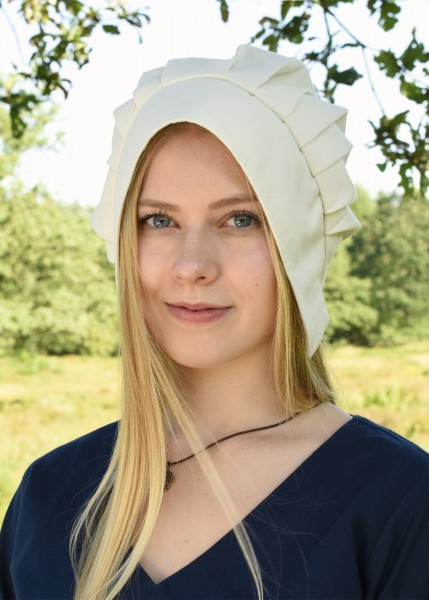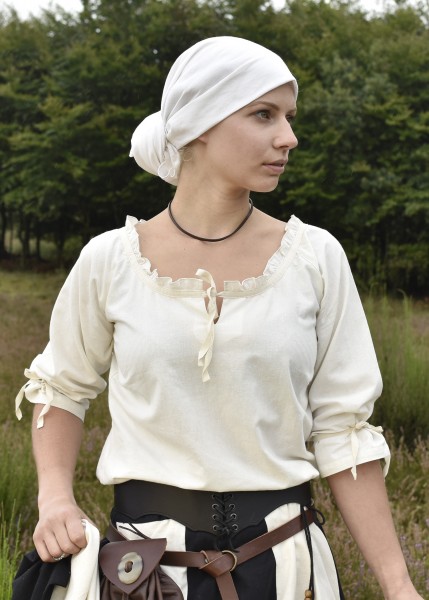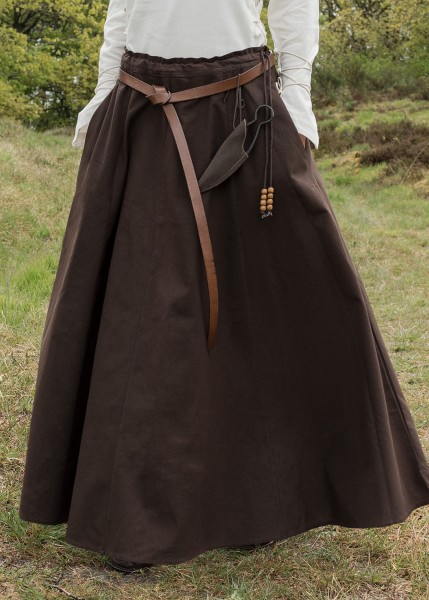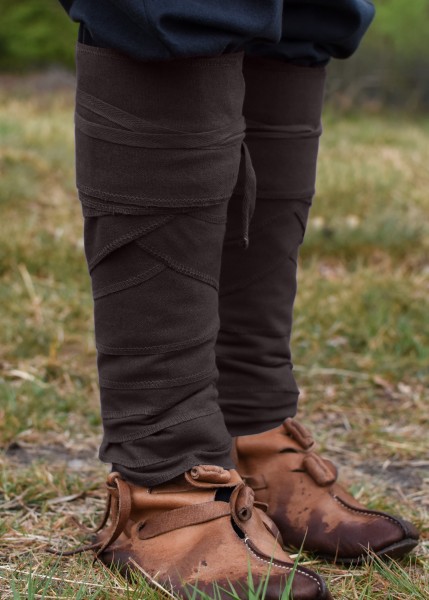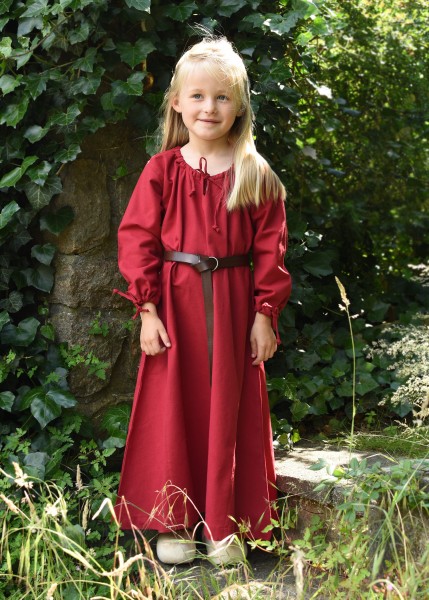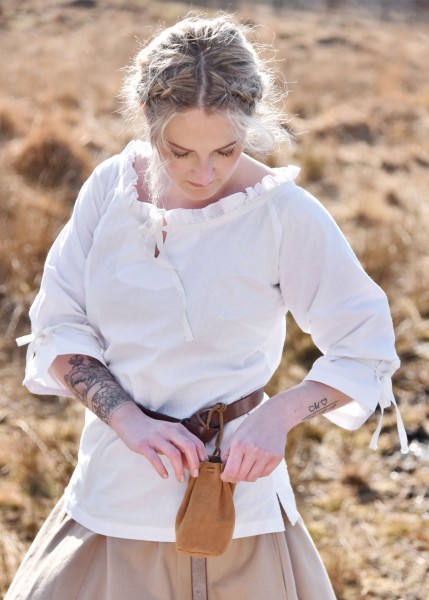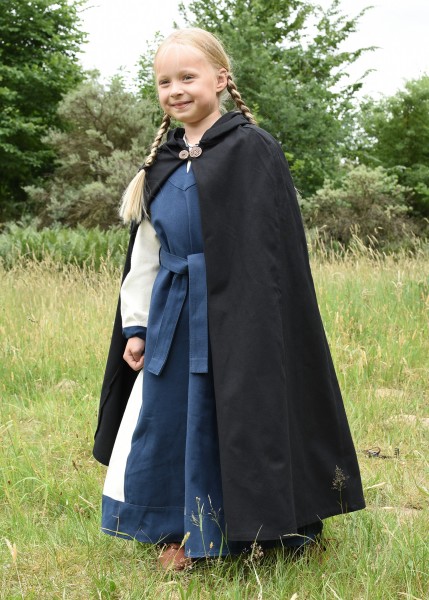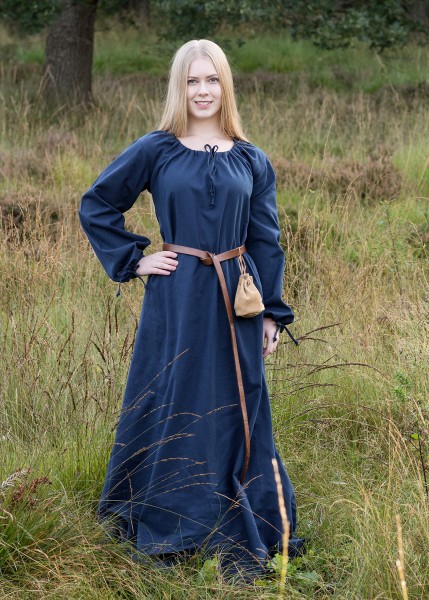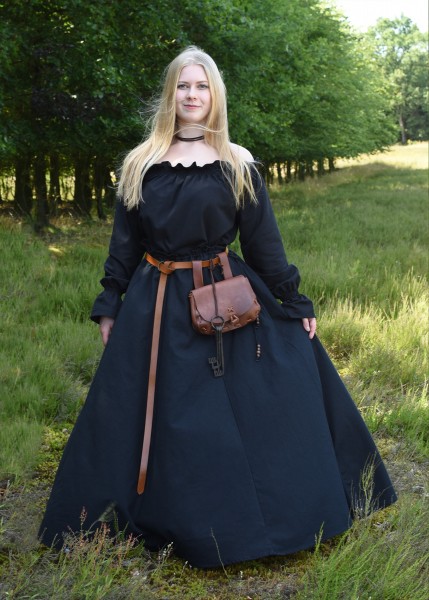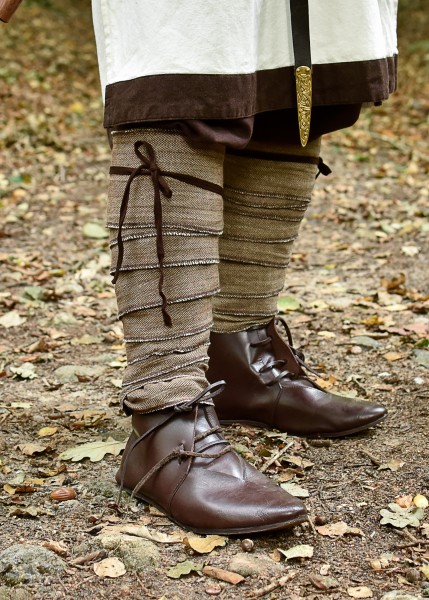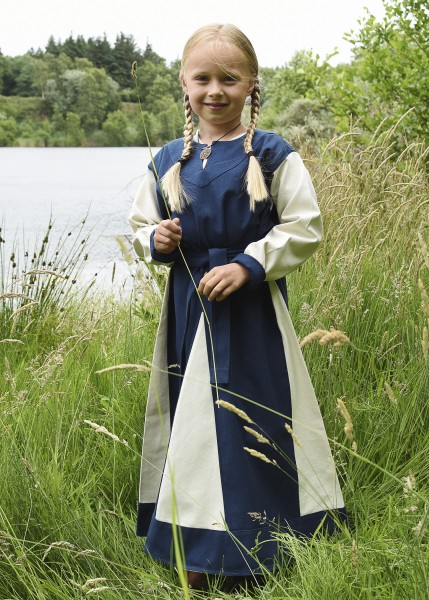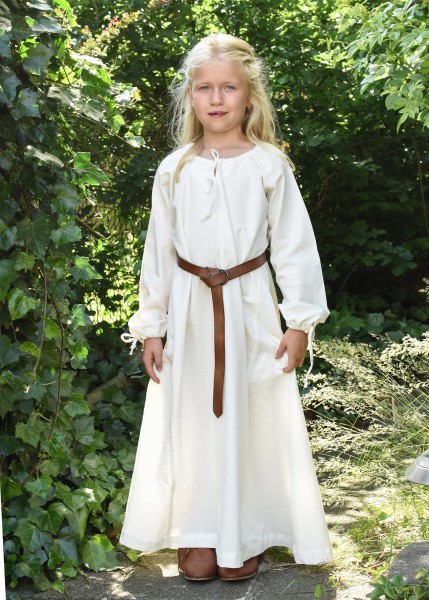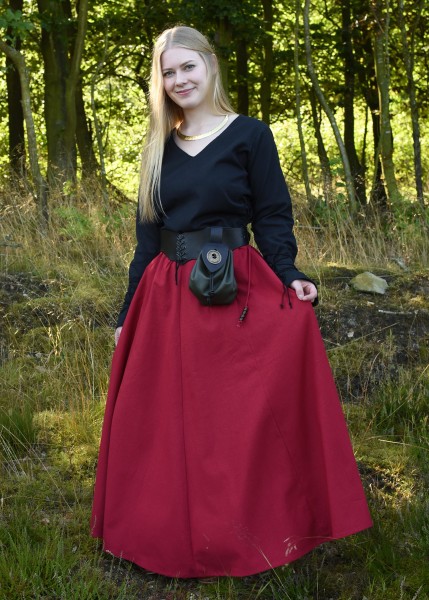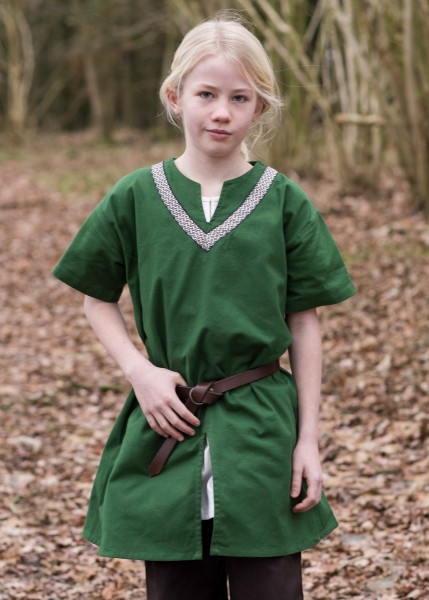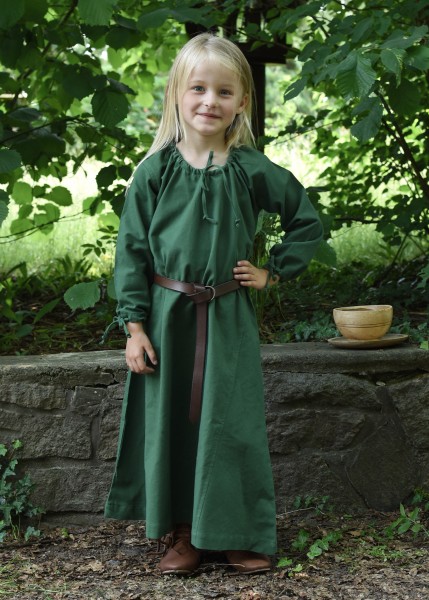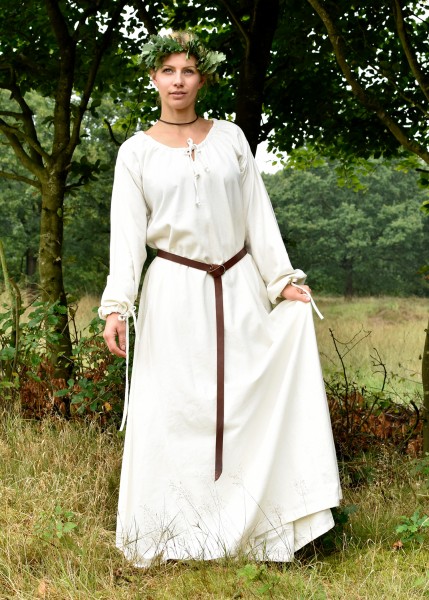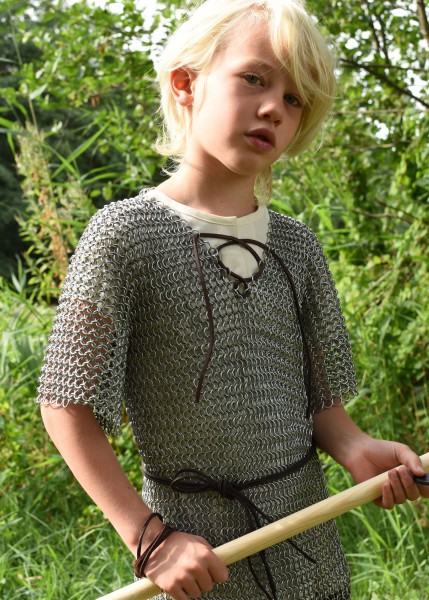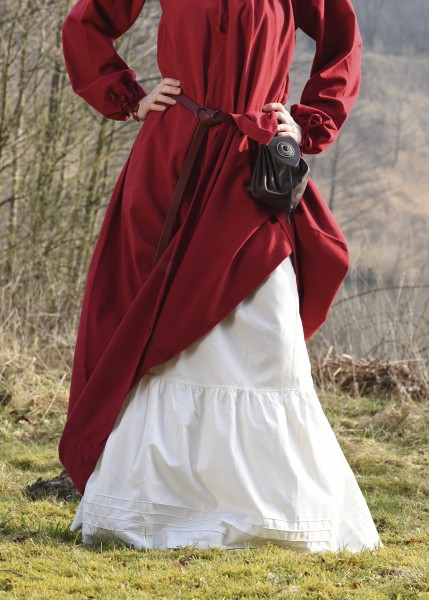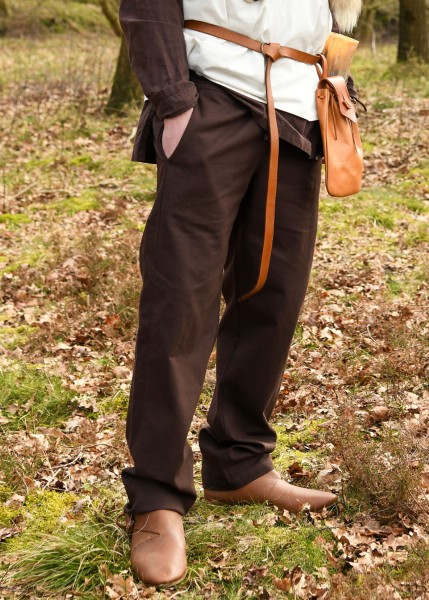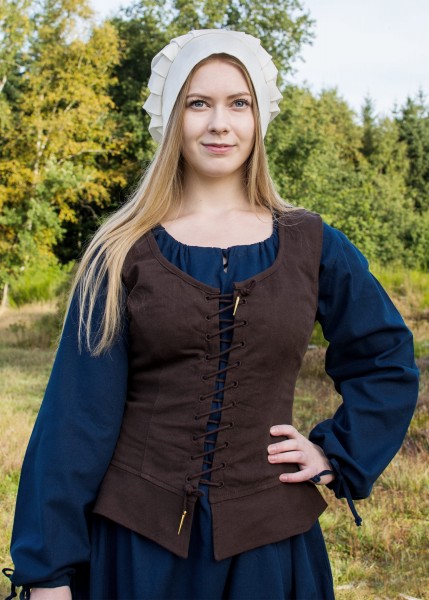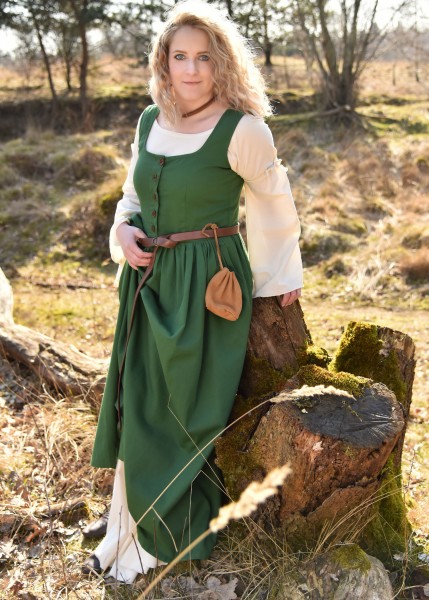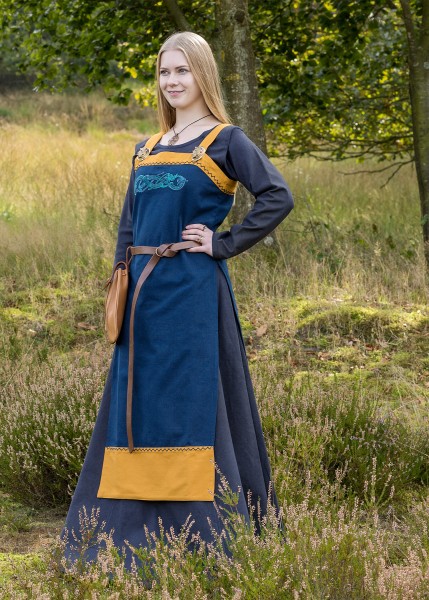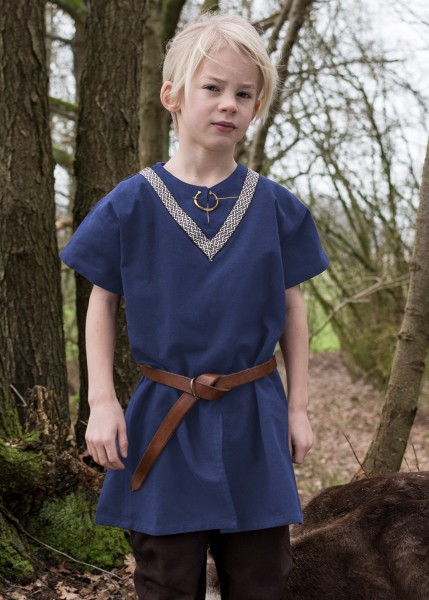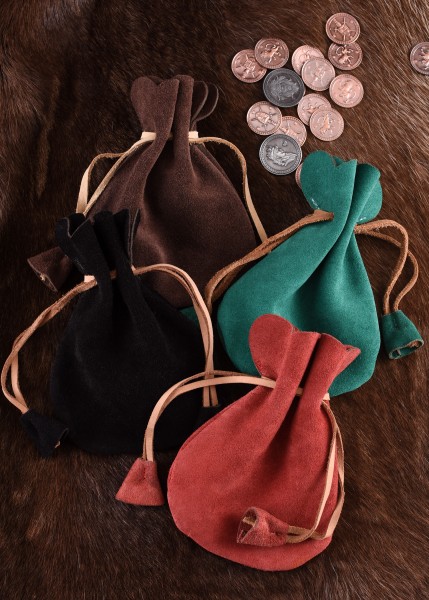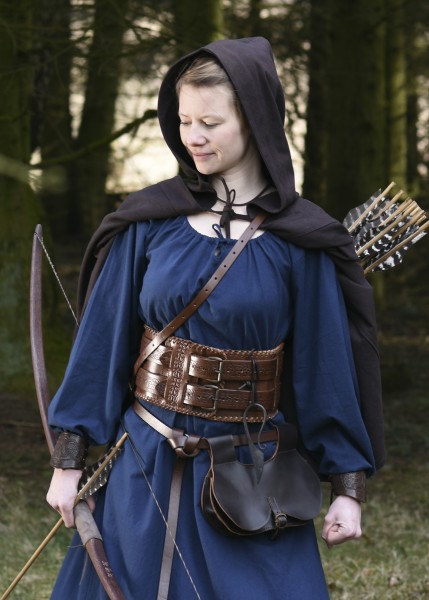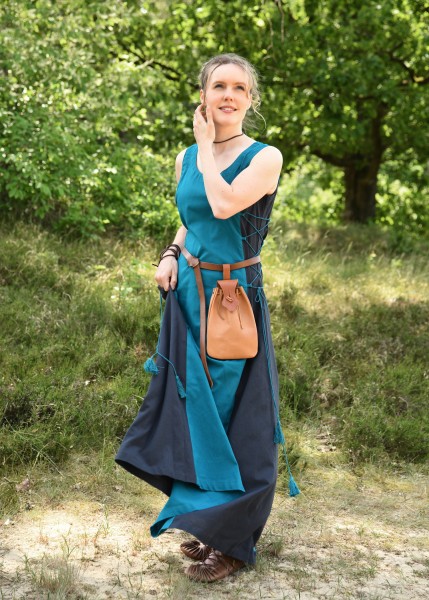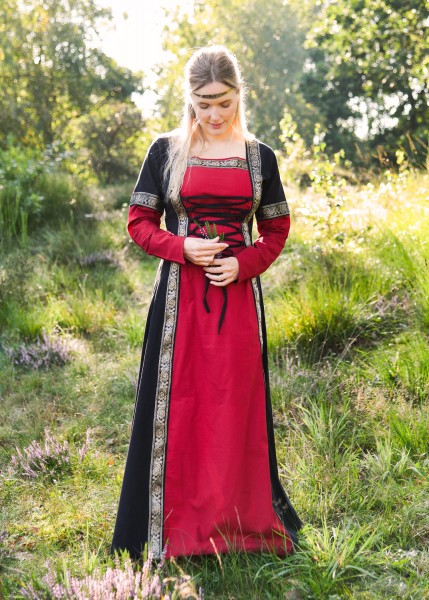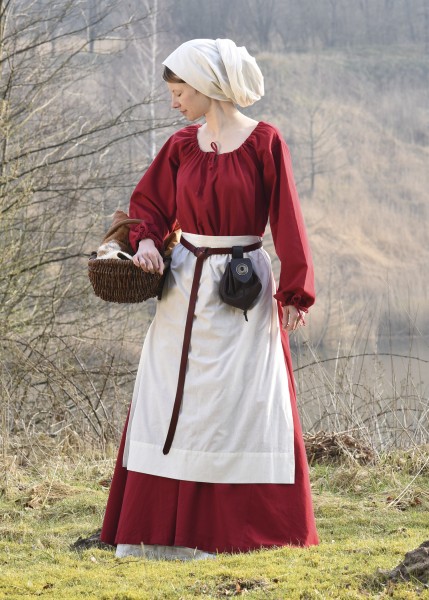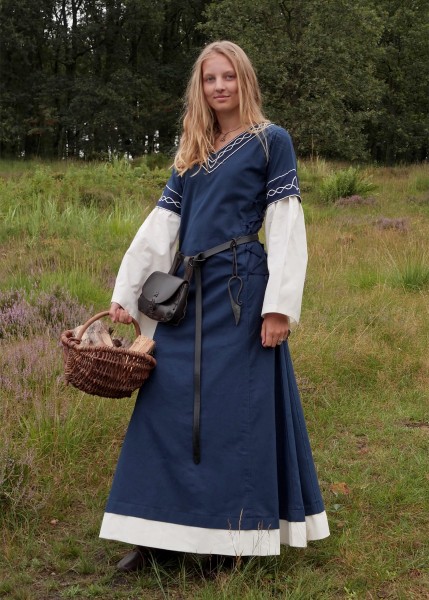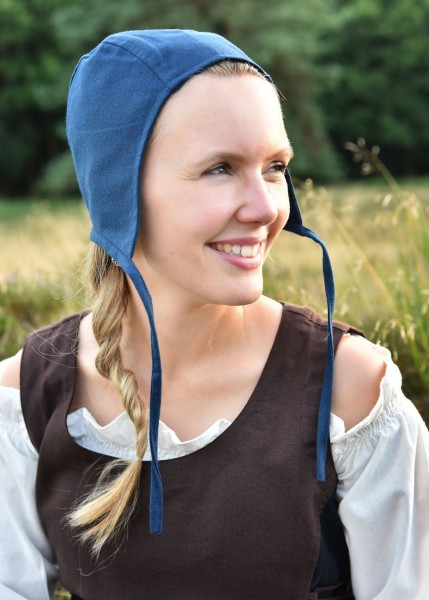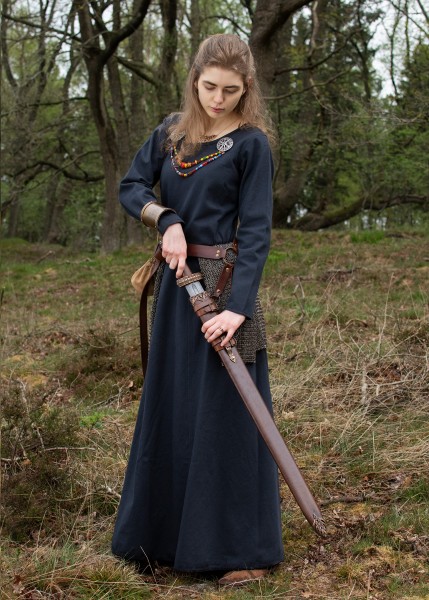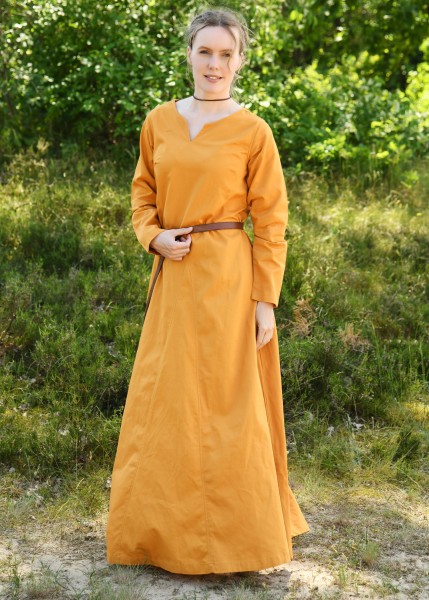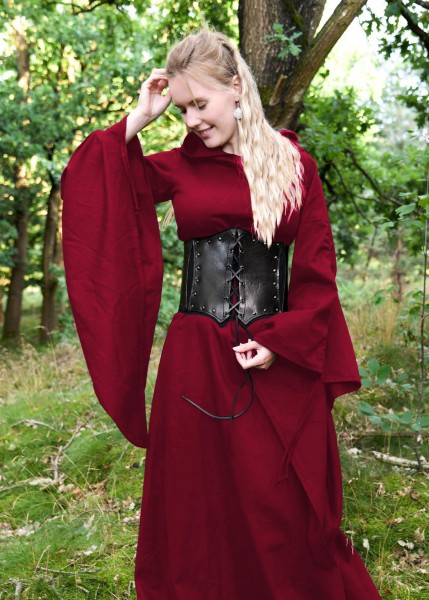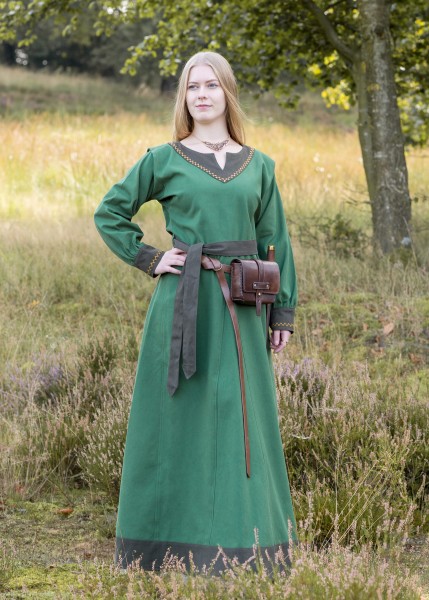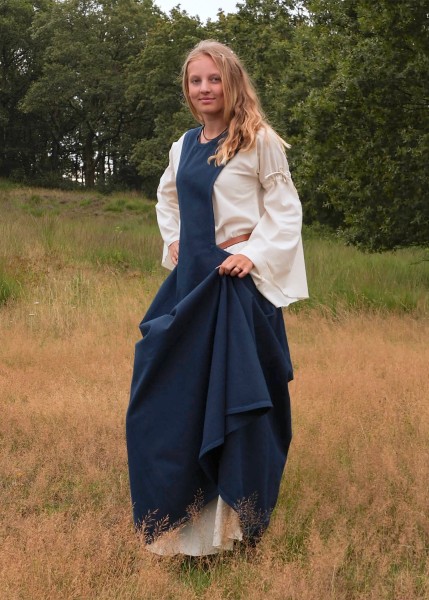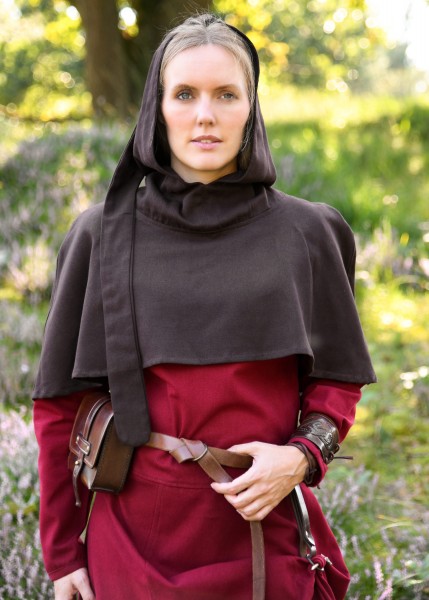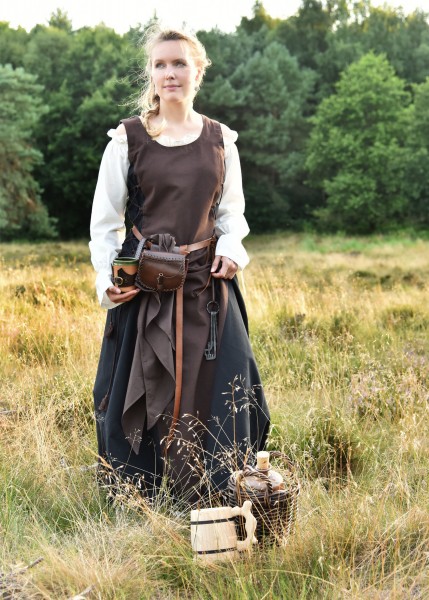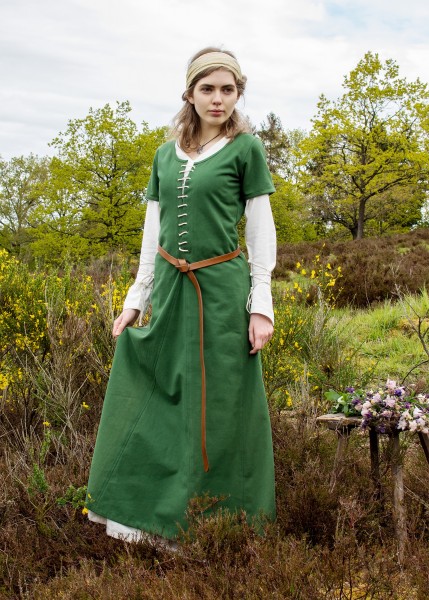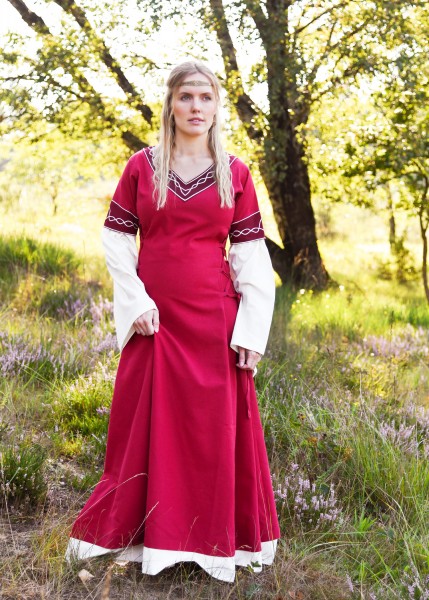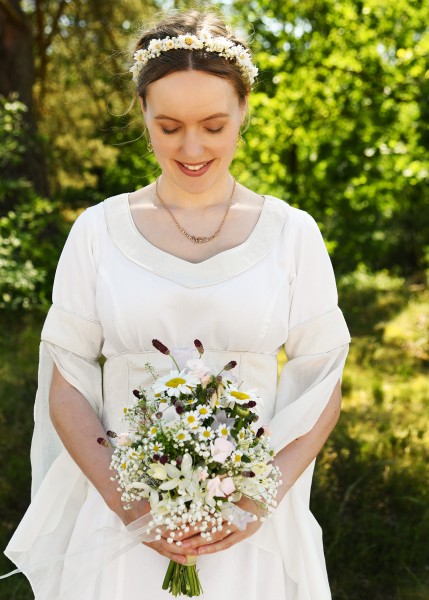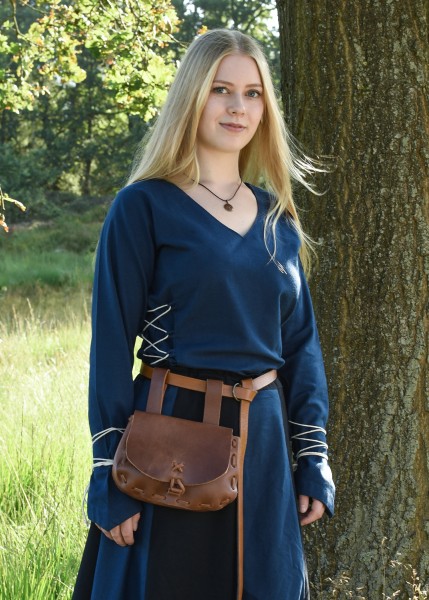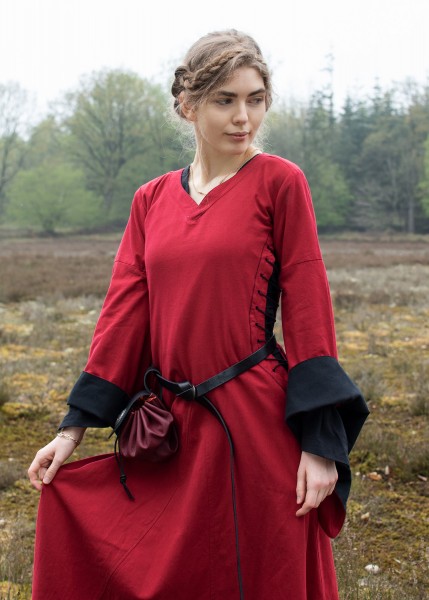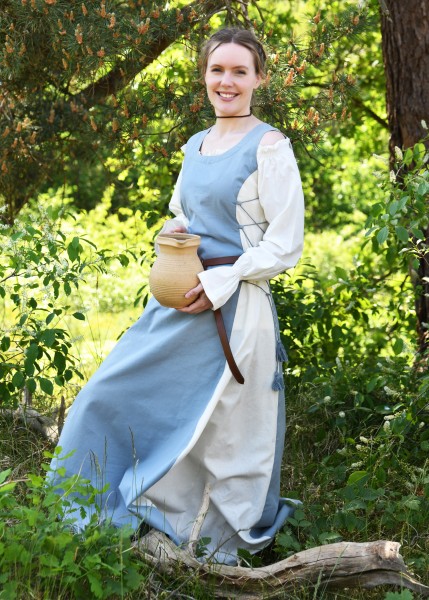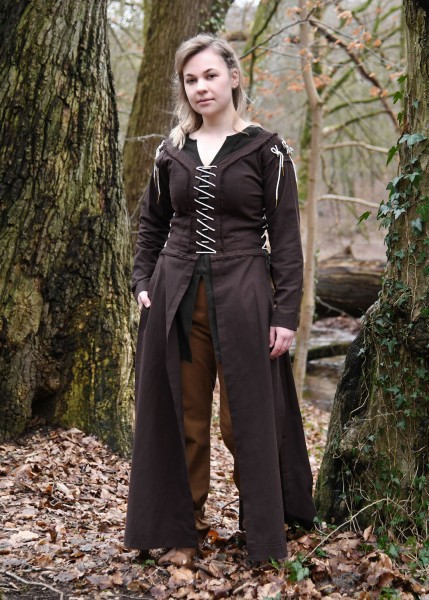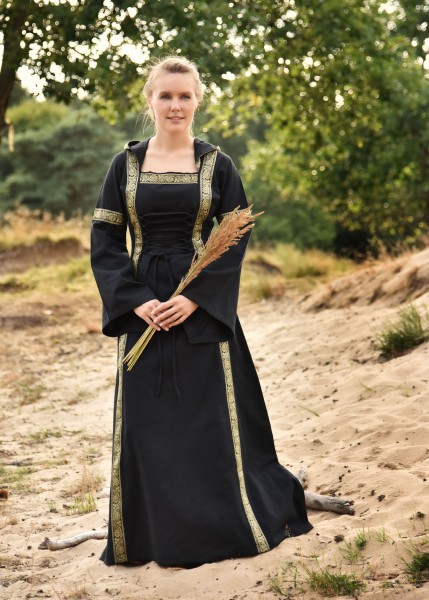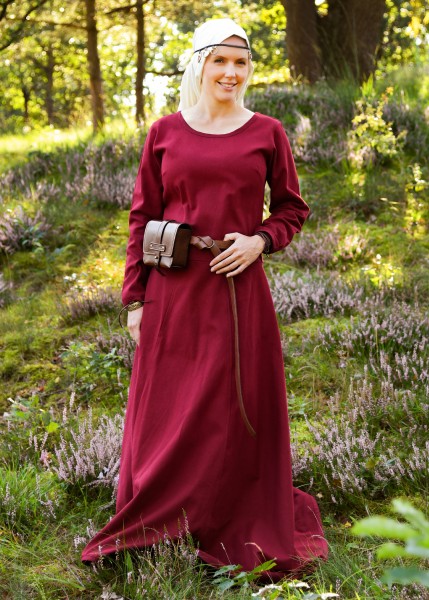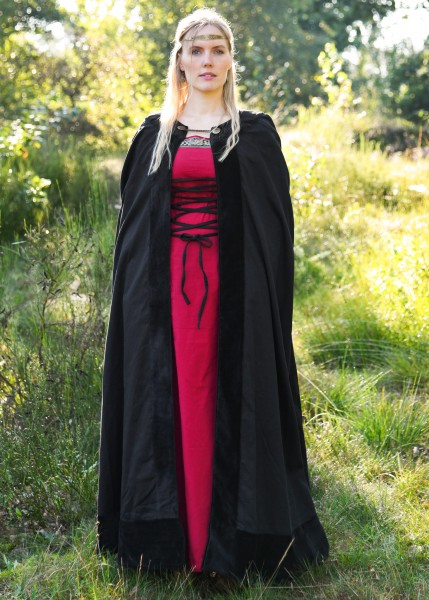Wimple, Medieval Headscarf, natural-coloured This rectangular piece of cloth is made of plain...more
Product information "Medieval Wimple, Headscarf, natural-coloured"
Wimple, Medieval Headscarf, natural-coloured
This rectangular piece of cloth is made of plain cotton fabric and features rolled hems. It can be tied as a so-called wimple ( wrap instruction) or as a headscarf for medieval reenactment, but is also versatile in modern everyday life. It can be worn as a stylish hair band, a turban, a shawl draped over the shoulders or a scarf elegantly wrapped around the neck.
In the Middle Ages, married women were expected to wear a headdress (hence the German expression unter die Haube kommen, which literally translates to "coming under the bonnet" and is still a common idiom today for "getting married"). In medieval times, there were many different ways for women to cover their heads, for example with a plain or frilled/goffered veil (with or without gorget around the neck), a bonnet, a coif, a barbette and fillet, a schapel (a decorated, crown-like hoop/wreath often worn in combination with a veil), or a wimple.
There were various methods to tie a wimple, but it was generally bound around the forehead, the chin and the back of the head and always concealed the hair. Historical illustrations of wimples can for example be found in the Weltchronik - Der Stricker - Karl der Große (engl. World Chronicle -The Knitter - Charlemagne), an illuminated parchment manuscript penned by Rudolf von Ems around 1300, or in the Morgan Bible (also known as the Maciejowski Bible or Crusader Bible), a picture bible from the 13th century.
Details:
- One size fits all - approx. 180 x 50 cm
- Colour: natural-coloured
- Material: 100% cotton
- Care instructions: Machine wash at 40°C, gentle cycle, do not tumble dry
Please note: Delivery includes the cloth only! The other items pictured above are available separately in our online shop.
This rectangular piece of cloth is made of plain cotton fabric and features rolled hems. It can be tied as a so-called wimple ( wrap instruction) or as a headscarf for medieval reenactment, but is also versatile in modern everyday life. It can be worn as a stylish hair band, a turban, a shawl draped over the shoulders or a scarf elegantly wrapped around the neck.
In the Middle Ages, married women were expected to wear a headdress (hence the German expression unter die Haube kommen, which literally translates to "coming under the bonnet" and is still a common idiom today for "getting married"). In medieval times, there were many different ways for women to cover their heads, for example with a plain or frilled/goffered veil (with or without gorget around the neck), a bonnet, a coif, a barbette and fillet, a schapel (a decorated, crown-like hoop/wreath often worn in combination with a veil), or a wimple.
There were various methods to tie a wimple, but it was generally bound around the forehead, the chin and the back of the head and always concealed the hair. Historical illustrations of wimples can for example be found in the Weltchronik - Der Stricker - Karl der Große (engl. World Chronicle -The Knitter - Charlemagne), an illuminated parchment manuscript penned by Rudolf von Ems around 1300, or in the Morgan Bible (also known as the Maciejowski Bible or Crusader Bible), a picture bible from the 13th century.
Details:
- One size fits all - approx. 180 x 50 cm
- Colour: natural-coloured
- Material: 100% cotton
- Care instructions: Machine wash at 40°C, gentle cycle, do not tumble dry
Please note: Delivery includes the cloth only! The other items pictured above are available separately in our online shop.
Links related to "Medieval Wimple, Headscarf, natural-coloured"
Reviews
1
Read, write and discuss reviewsmore
Only real consumers can give a rating and write a written review. The stars show an average of all reviews. We publish positive and negative reviews after our review.
Customer reviews for "Medieval Wimple, Headscarf, natural-coloured"
From:
Anonym
On the:
27 Jun 2024
Schönes Tuch
Das Tuch hat eine hübsche Cremefarbe und ist nicht schneeweiß. Leider konnte ich es nicht wie gewünscht binden und hätte ein längeres Tuch kaufen müssen. Das mindert jedoch nicht die Qualität des Produkts.
Write a review
Cookie settings
This website uses cookies which are necessary for the technical operation of the website and are always set. Other cookies, which increase the comfort when using this website, are used for direct advertising or to facilitate interaction with other websites and social networks, are only set with your consent.
Last viewed










